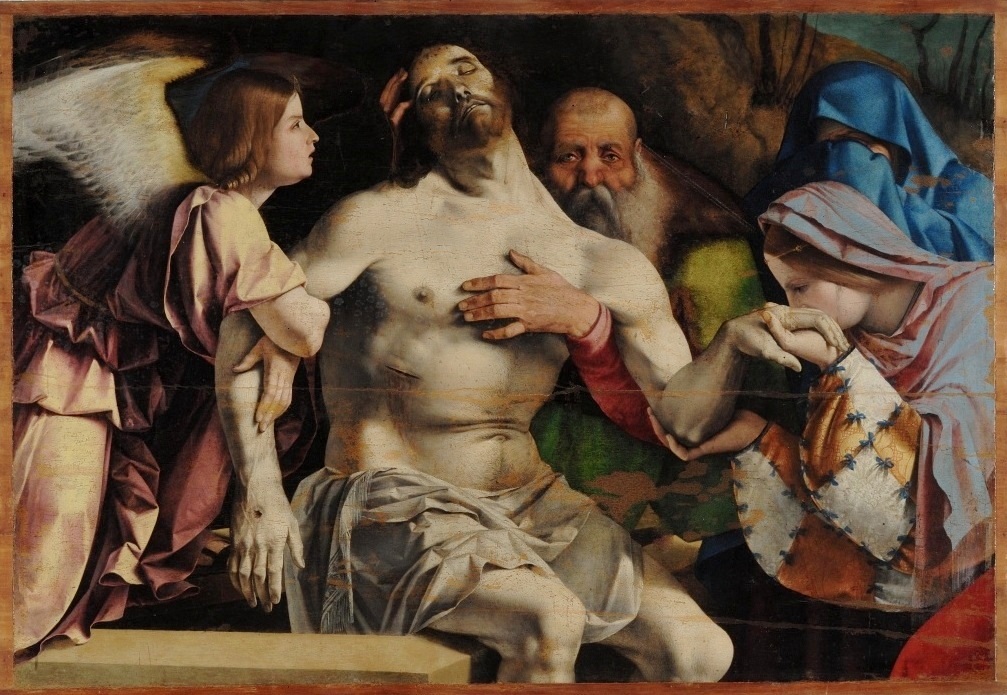Recanati Polyptych on:
[Wikipedia]
[Google]
[Amazon]
The Recanati Polyptych (Italian: ''Polittico di Recanati'') is an oil-on-panel painting by the  Lotto began to work on the piece in 1506 as a devotional for the church of San Domenico in Recanati. The work was seen and described complete and in situ by
Lotto began to work on the piece in 1506 as a devotional for the church of San Domenico in Recanati. The work was seen and described complete and in situ by Lives of Seventy of the Most Eminent Painters, Sculptors and Architects
Volume 3, by Giorgio Vasari,
Italian Renaissance
The Italian Renaissance ( it, Rinascimento ) was a period in Italian history covering the 15th and 16th centuries. The period is known for the initial development of the broader Renaissance culture that spread across Europe and marked the trans ...
painter Lorenzo Lotto
Lorenzo Lotto (c. 1480 – 1556/57) was an Italian painter, draughtsman, and illustrator, traditionally placed in the Venetian school, though much of his career was spent in other north Italian cities. He painted mainly altarpieces, religiou ...
, executed in 1506–1508 and housed in the Civic Museum of Villa Colloredo Mels, Recanati
Recanati () is a town and ''comune'' in the Province of Macerata, in the Marche region of Italy. Recanati was founded around 1150 AD from three pre-existing castles. In 1290 it proclaimed itself an independent republic and, in the 15th century, ...
, Italy. The work is dated and signed ''Laurent usLotus MDVIII''.
 Lotto began to work on the piece in 1506 as a devotional for the church of San Domenico in Recanati. The work was seen and described complete and in situ by
Lotto began to work on the piece in 1506 as a devotional for the church of San Domenico in Recanati. The work was seen and described complete and in situ by Giorgio Vasari
Giorgio Vasari (, also , ; 30 July 1511 – 27 June 1574) was an Italian Renaissance Master, who worked as a painter, architect, engineer, writer, and historian, who is best known for his work '' The Lives of the Most Excellent Painters, Sculp ...
in his ''Vite'', where he wrote that Lotto "was still young and followed partly the manner of the Bellini, partly that of Giorgione".Volume 3, by Giorgio Vasari,
Mrs. Jonathan Foster
Eliza Vere Foster (Cheltenham, 25 July 1802 - Bergamo, 4 October 1888) was an English author and literary translator from Italian, Spanish and German.
Biography
After studying classic and modern languages, and already a widow at 30, on 7 Ma ...
, Edwin Howland Blashfield, page 311. By 1861, the polyptych was disassembled, but was later recomposed and transferred to the Communal Art Gallery. San Domenico still contains a Lotto fresco depicting ''St Vincent Ferrer''.
Description
The polyptych includes a larger altarpiece in the center, flanked by two smaller ones in the same shape. At the top are two side panels with saints, and a top rectangular one depicting the ''Pietà
The Pietà (; meaning " pity", "compassion") is a subject in Christian art depicting the Virgin Mary cradling the dead body of Jesus after his body was removed from the cross. It is most often found in sculpture. The Pietà is a specific form ...
''. The polyptych scheme, related to a 15th-century old-fashioned scheme, was perhaps chosen by the friars of the convent. Lotto developed it into a single composition, at least in the lower panels, with a scene set under a loggia
In architecture, a loggia ( , usually , ) is a covered exterior gallery or corridor, usually on an upper level, but sometimes on the ground level of a building. The outer wall is open to the elements, usually supported by a series of columns ...
with a coffered barrel vault in center and two minor vaults at the sides, while in the background is a landscape representation.
The niches in the background, featuring Byzantine-style mosaics, are inspired by earlier works by Giovanni Bellini, while the checkerboard pavement is an example of knowledge of the geometrical perspective
Linear or point-projection perspective (from la, perspicere 'to see through') is one of two types of graphical projection perspective in the graphic arts; the other is parallel projection. Linear perspective is an approximate representation, ...
introduced by the Italian Renaissance in the 15th century.
The panels are:
*''Madonna with Child, Angels and Saints'' (center, 227x108 cm)
*''Saints Thomas of Aquino and Flavian'' (left, 155x67 cm)
*''Saints Peter of Verona and Vitus'' (right, 155x67 cm)
*''Saints Lucy and Vincent Ferrer'' (upper left, 67x67 cm)
*''Saints Catherine of Siena and Sigismund'' (upper right, 67x67 cm)
*''Pietà'' (top, 80x108 cm)
The presence of Dominican saints is connected to the order who held the church, while Flavian and Vitues are the patrons saints of Recanati. Saint Dominic himself is portrayed in the central panel while receiving the white scapular from the Virgin. Next to Dominic are two little musician angels, who are scared by him.
See also
* Recanati AnnunciationReferences
Sources
* {{Lorenzo Lotto 1508 paintings Paintings of the Madonna and Child by Lorenzo Lotto Paintings in Marche Recanati